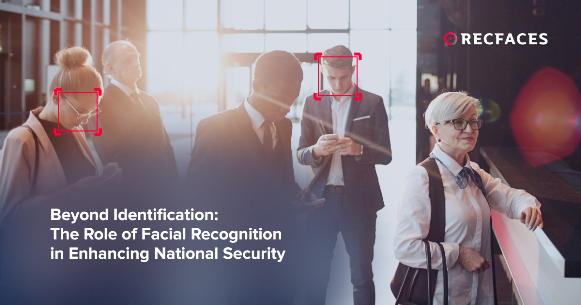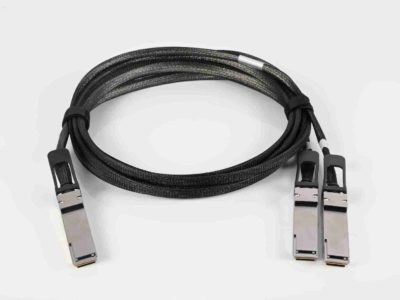Homeland security isn’t just a matter of defense — it’s the promise that we can live our lives free from fear, knowing that our families and communities are safe. In an unpredictable world where threats can strike at any moment, protecting our borders, our people, and our way of life is more crucial than ever. It’s not just about securing physical spaces — it’s about safeguarding the peace of mind that allows us to thrive. Homeland security is the silent force protecting us from the chaos, ensuring that safety and stability remain constant.
RELATED: World Biometrics Day: Celebrating the Technology That Protects Us Every Day
In the high-stakes world of homeland security, facial recognition is the invisible force that identifies threats before they strike, turning a sea of anonymity into a line of defense. As global security challenges evolve, this technology provides a vital edge, turning our unique identities into powerful assets for national defense.
The need for security in a connected world
Strong security measures are more crucial than ever in our increasingly connected society, especially when it comes to homeland security. Their responsibilities encompass counterterrorism, cybersecurity, aviation security, border security, port security, maritime security, immigration, and the safeguarding of national leaders and critical infrastructure against chemical, biological, or nuclear threats. With 64% of countries implementing facial recognition systems (FRS), it ranks among the top three AI surveillance technologies worldwide. This adaptable technology has established itself as a major participant in the security ecosystem by protecting both big and small areas, as well as real and virtual surroundings.
These systems enable real-time identification of individuals approaching checkpoints, allowing security personnel to assess potential threats without requiring travelers to exit their vehicles. This greatly improves operating efficiency while also streamlining the security procedure at border crossings. FRS is getting better at correctly detecting people in difficult surroundings as technology develops. With better algorithms and imaging techniques, these systems can lower false positives and increase dependability, offering security personnel more assurance in their assessments. Identification procedures can be automated to save up staff time for higher-priority threats, resulting in more efficient security measures and faster reaction times.
FRS is essential for data collection and analysis
Furthermore, FRS is essential for data collection and analysis since it provides information on cross-border movements of people. Strategies for resource allocation and threat avoidance can be informed by patterns and trends found in this data. The technology’s capacity to detect individuals on terrorist watchlists ᅳ even via car windows ᅳ significantly increases security measures. This technology notifies security teams of any intrusions and makes sure that only authorized individuals are able to access sensitive locations in military situations.
Strict security standards are upheld while verified individuals can pass through more easily, facilitating quicker guest access. Its cost-effective adoption is further enhanced by its seamless integration into pre-existing video surveillance systems. With granular access controls, this technology does not only define who has access to specific locations but also when and where they can enter, greatly enhancing security in a world where threats are constantly evolving. In this way, facial recognition systems are emerging as a cornerstone of modern security infrastructure, addressing critical homeland security concerns and paving the way for a safer future.
From Vision to Reality: Facial Recognition in Action at Peru Airport
The impact of this technology is best demonstrated at Peru Airport, where it is extremely difficult to maintain security while handling a steady stream of passengers. RecFaces developed a cutting-edge facial recognition solution, Id-Guard, to address this. This solution expedited the identifying process and greatly enhanced security at critical entry points. Id-Guard makes it possible for people to be recognized in real time as they pass through the airport, giving security officers the ability to react quickly to possible problems and improving staff and passenger safety.
The efficacy of incorporating sophisticated biometric technologies into high-security environments is demonstrated by the deployment of Id-Guard. RecFaces collaborated closely with airport officials for a year and a half, offering continuous technical support and training to optimize the system’s efficacy. The outcome is a smooth integration with pre-existing video surveillance systems, enabling security teams to oversee stop lists and track individual movements in real time. This change not only strengthened security procedures at Peru Airport but also demonstrated RecFaces’ dedication to providing dependable solutions, establishing a standard for further developments in airport security, and guaranteeing safer travel experiences for everybody.
Innovative Applications: Beyond Surveillance
Face recognition technology is already expanding beyond its conventional use in identification and surveillance, building on the success at Peru Airport. It is unlocking new, innovative applications that are reshaping the landscape of homeland security. One of its most significant applications is in the recovery of missing people; in conjunction with local law enforcement, facial recognition systems can swiftly examine surveillance footage to identify people who have been reported missing, resulting in happy reunions and showcasing the technology’s capacity for compassion. Furthermore, by identifying identity theft and fake documents, facial recognition enhances immigration procedures, protecting border control measures, and boosting public trust in safety procedures. These uses demonstrate how adaptable facial recognition technology is for safeguarding public areas, boosting national security, and tackling pressing societal concerns.
A Collective Journey Toward Safety
With the increasing role that this technology plays in improving security, a safer future becomes certain. But this development also raises a critical issue: protecting individual privacy. For biometric systems to be effective, people need to have faith in their ability to protect personal information. This calls for openness in the way data is gathered and used, as well as public participation in the development of security guidelines. People’s trust grows when they are aware of how their information is used and see safeguards in place to preserve it.
At its core, facial biometric technology should aim to enhance individuals’ sense of safety rather than just augment existing security protocols. As people feel more secure — whether navigating airport security or accessing financial accounts — they are more likely to embrace these innovations. Therefore, as we embark on this collective journey, it’s essential that advancements in biometric technology prioritize both security and the rights of individuals. By doing so, we can foster a future where safety and privacy coexist harmoniously, allowing society to thrive in an environment built on trust and confidence.
“Facial recognition is redefining national security, identifying threats before they strike and protecting borders with unmatched precision, ensuring safety and peace of mind.” Said Oleg Kurochkin, Business Development Director, APAC region, RecFaces.
































